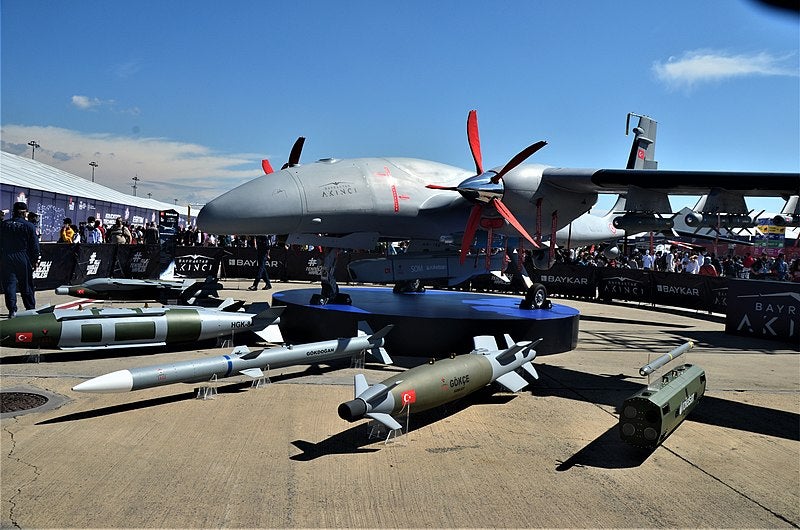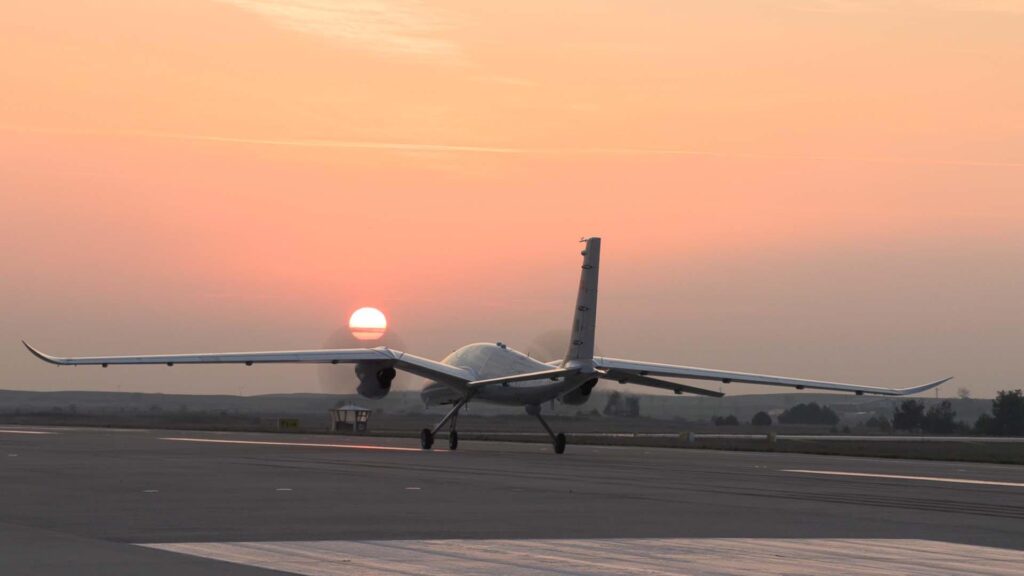Footage Suggests Libyan Government of National Unity Operating Bayraktar Akıncı Drones
Last week, Abdul Hamid Dbeibeh, Prime Minister of the Libyan National Unity Government, which is supported by the United Nations and the European Union, shared footage of operations carried out by unmanned aerial vehicles in the Libyan Air Force inventory against fuel, human, and drug smuggling on his social media account. In the video, it can be seen that the Libyan Air Force’s Bayraktar TB2 and Bayraktar TB2S drones successfully hit enemy targets in many regions in the west of the country, including Busra, Mutrad, Al Harsha and Maya ports. Furthermore, Akıncı drones taking off from an unknown base were seen at two points in the footage. Thus, for the first time, it was confirmed that the Libyan Government of National Unity has begun using Bayraktar Akıncı drones.
Following the news, some defense analysts on social media claimed that the clip purportedly showing the use of the Akıncı drone in Libya was really from the EFES-2022 Exercise held by Turkey, and that Libya has yet to receive these systems. On the other hand, while other experts noted that the Libyan Prime Minister’s release of AKINCI drone footage confirms that these systems are being used by Libya.
The Libyan Prime Minister of the National Unity Government, Abdul Hamid Dbeibeh, met with Haluk Bayraktar, the manager of the Baykar firm, at the SAHA EXPO Defense & Aviation Fair in Istanbul in October last year, and then posed for the press in front of an Akıncı drone. During the expo, Turkish Defense Minister at the time Hulusi Akar and Libyan Prime Minister Abdul Hamid Dbeibeh signed two important military cooperation agreements. The Libyan and Turkish media claimed at the time that the two nations were very near to reaching an agreement on the sale of Akıncı systems and related military equipment. The footage shared by the Prime Minister could be of the Akıncı drones procured as a result of the discussions that took place at the time. Another possibility is that these systems may have been deployed to Libya by the Turkish Air Force Command to assist the Libyan National Unity Government in its fight against forces loyal to Khalifa Haftar, the leader of the armed forces in eastern Libya. Turkey has previously deployed Bayraktar TB2s in its inventory in Libya.
Baykar Defense states that the Akıncı drone can fly up to 40 thousand feet, stay airborne for 24 hours, has a payload capacity of 5 tons, and a maximum cruise speed of 150 to 195 knots. Two alternative configurations—A and B—are available, the difference primarily being the engine power with Akıncı B variant being the more powerful.

The aircraft reportedly has advanced artificial intelligence capabilities and can carry EO/IR cameras, ASELSAN’s domestically produced AESA radar, a Beyond Line of Sight (satellite) connection, and electronic support systems. Akıncı’s increased carrying capacity allows it to carry a significant payload, while the TB2 can only carry four MAM-Ls, the Akıncı can carry up to 24 MAM-Ls. The Akıncı is rated to carry a range of Turkey’s domestically produced munitions. Find out more about the Akıncı here.

